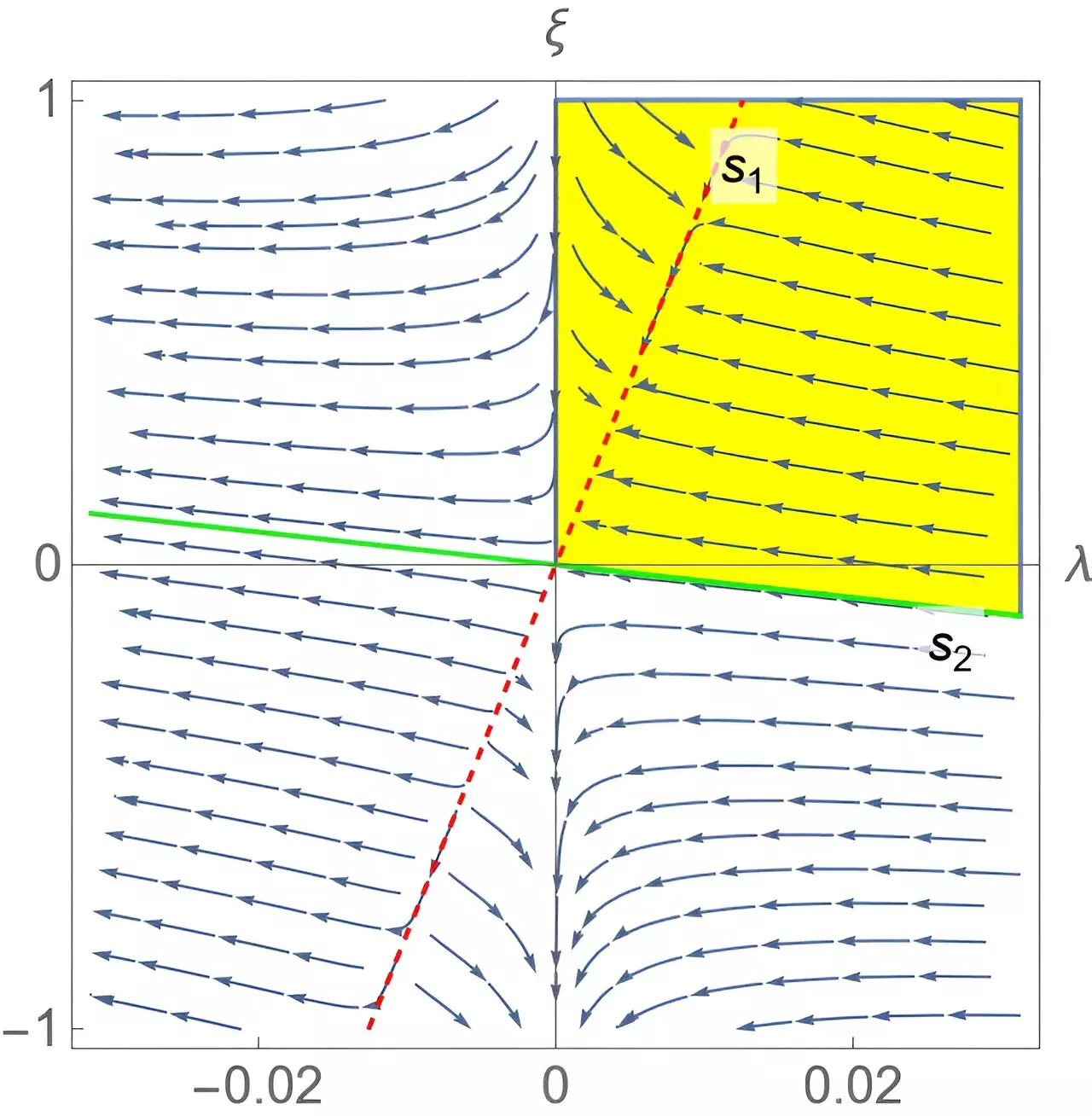In the ever-evolving landscape of theoretical physics, a recent research collaboration involving the International School for Advanced Studies in Trieste, the University of Massachusetts, and the Instituto de Física Teórica at Universidade Estadual Paulista has unveiled a groundbreaking perspective on quadratic gravity. Published in *Physical Review Letters*, this study offers novel insights into the elusive concept of beta functions, which are crucial for understanding the dynamics of quantum field theories (QFTs). This endeavor is not merely academic; it promises the prospect of addressing significant gaps in our comprehension of gravity, from both classical and quantum perspectives.
Exploring the Depths of Quantum Gravitational Phenomena
Quadratic gravity, as articulated by the researchers, serves as a sophisticated extension of Albert Einstein’s general relativity. This theory incorporates quadratic terms related to curvature into the Einstein-Hilbert action, thus enabling physicists to tackle some of the long-standing limitations that standard gravity theories face. John Donoghue, one of the study’s co-authors, underscores the critical nature of this endeavor, suggesting that understanding the couplings’ behavior across different energy scales is essential for painting a coherent picture of gravitational phenomena. The promise of a more robust framework for gravitational interactions across various scales is tantalizing for physicists engaged in cutting-edge research.
Deciphering the Beta Function’s Role
Integral to this research is the concept of the beta function, a mathematical entity that describes how coupling constants—representing the strengths of interactions—evolve with energy levels. Gabriel Menezes, another co-author, emphasizes that comprehending the beta function is paramount for unveiling the high-energy aspects of quantum theories. The beta function acts as a compass, directing researchers on how to navigate the complexities of quantum amplitudes and their transforming relationships as energy shifts. A well-defined understanding of this function suggests a rich, interconnected web of gravitational phenomena waiting to be explored.
Innovative Techniques for a Complex Problem
The researchers have developed unprecedented techniques to accurately calculate the beta functions in quadratic gravity, addressing inconsistencies that have plagued previous methodologies. While multiple existing techniques generally produce congruent results in other well-established theories, they diverge within the realm of quadratic gravity. Donoghue and his colleagues have positioned their new methods as necessary innovations to feel the pulse of coupling constants more precisely, thereby illuminating the underlying fabric of the theory. This suggests a paradigm shift in the exploration of gravitational interactions, heralding the potential to redefine how physicists approach quantum gravity.
Asymptotic Freedom and Its Implications
A particularly significant outcome of this research is the discovery that coupling constants in quadratic gravity may not only stabilize but potentially diminish to near-zero values at high energy levels. This concept, known as asymptotic freedom, hints at a participation of quadratic gravity in various high-energy scenarios without leading to instabilities such as tachyons—hypothetical particles that travel faster than light. The absence of such instabilities bodes well for the theory’s viability as a comprehensive description of quantum gravity.
A Broader Perspective: Gravitational Theories in Context
Quadratic gravity cannot be viewed in isolation; it exists within a broader spectrum of gravitational theories that strive to unite quantum mechanics with general relativity. The peculiarities inherent in these theories demand a more profound and nuanced understanding, as emphasized by Donoghue. What is particularly exciting about this research is how it positions quadratic gravity as an essential component within a larger framework of gravity-related field theories. By clarifying these relationships, researchers can pave the way for future exploration into gravitational phenomena and ultimate validation of quantum field theories.
Building Towards a Quantum Gravity Theory
As Donoghue and his colleagues bask in the glow of their research, one cannot help but hope for the broader ramifications of these insights. In a field rife with speculation and theoretical ambiguity, their work opens exciting avenues for future inquiry, particularly concerning scattering amplitudes and cross-sections within quadratic gravity. The opportunity to solidify a quantum field theory of gravity might not be as distant as previously thought. As researchers, including Menezes, express their readiness to dive deeper into these intricacies, the scientific community has much to anticipate regarding this promising trajectory within theoretical physics. The stage is set, the theories are alive with potential, and perhaps we stand on the brink of revolutionary insights into the nature of gravity itself.


Leave a Reply